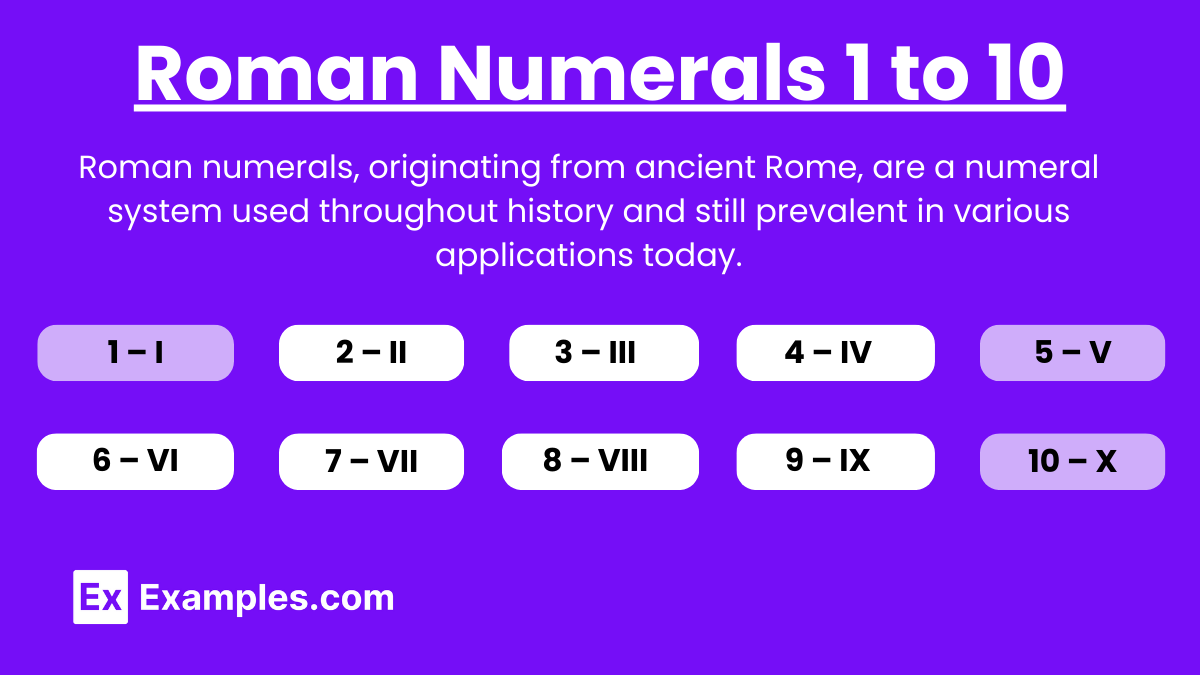What is the Roman numeral for 3?
II
III
IV
V


Roman numerals, originating from ancient Rome, are a numeral system used throughout history and still prevalent in various applications today. The Roman numerals from 1 to 10 are represented as follows: I (1), II (2), III (3), IV (4), V (5), VI (6), VII (7), VIII (8), IX (9), and X (10). This system uses combinations of letters from the Latin alphabet to signify values and is used in contexts such as clock faces, book chapters, and movie sequels. Understanding Roman numerals provides insight into historical numbering systems and enhances one’s ability to interpret a wide range of modern and historical references.
Download Roman Numerals 1 to 10 in PDF

Download Roman Numerals 1 to 10 in PDF
| 1-I | 6-VI |
| 2-II | 7-VII |
| 3-III | 8-VIII |
| 4-IV | 9-IX |
| 5-V | 10-X |
Understanding Roman numerals from 1 to 10 is fundamental for grasping the basics of this ancient numbering system. The numerals I, II, III, IV, V, VI, VII, VIII, IX, and X represent the numbers 1 through 10, respectively. The system uses a combination of letters from the Latin alphabet with specific rules for repetition, addition, and subtraction to form these numbers. Mastery of these numerals provides a solid foundation for interpreting Roman numerals in various modern contexts, such as in clocks, book chapters, and historical documents, enhancing both historical knowledge and numerical literacy.
Text prompt
Add Tone
10 Examples of Public speaking
20 Examples of Gas lighting
What is the Roman numeral for 3?
II
III
IV
V
Which Roman numeral stands for 7?
VI
VII
VIII
IX
What is the Roman numeral for 10?
IX
X
XI
XII
Which Roman numeral represents 9?
VIII
IX
X
VII
What is the Roman numeral for 2?
I
II
III
IV
Which Roman numeral represents 5?
IV
V
VI
VII
What is the Roman numeral for 8?
VII
VIII
IX
X
Which Roman numeral represents 4?
III
IV
V
VI
What is the Roman numeral for 6?
V
VI
VII
VIII
Which Roman numeral represents 1?
I
II
III
IV
Before you leave, take our quick quiz to enhance your learning!

